Are you interested in learning about the fascinating history of Punjab? Have you ever wondered what it was like to live during different eras and how places have changed over time?
If the answer is yes, then look no further! In this post, we’ll explore some of the historical monuments of Punjab.
In the land of five rivers, there are many monuments that tell us stories about our past. These structures stand in honor of what we have achieved over time and they form a significant part of Punjab’s heritage.
You can take a virtual tour of the historical monuments of Arunachal Pradesh, Tamil Nadu, Andhra Pradesh, and more on our website.
Discover the Most Iconic Historical Monuments of Punjab
In this blog post, we will take a look at some of Punjab’s most beloved historical landmarks so buckle up and get ready for a virtual tour through time.
#1. Golden Temple(Sri Harmandir Sahib), Amritsar

The Golden Temple, also known as Harmandir Sahib, is one of the most significant historical monuments of Punjab. It’s the holiest site for the Sikh community, who regard it as a place of worship, and selfless service.
The temple complex includes several buildings, including the Akal Takht, Langar Hall, and the beautiful Amrit Sarovar tank.
What sets this temple apart is the golden dome shimmering in the sunlight, which beautifully complements the Islamic-style minarets.
The temple’s foundation stone was laid by the famous Sufi saint Mian Mir, symbolizing openness towards all people and religions.
One outstanding feature is the community kitchen service, or Langar Sewa, which serves free meals to all visitors and is the world’s largest kitchen.
The Golden Temple is undoubtedly one of the most exquisite and peaceful places globally, making it a must-visit for those exploring the cultural heritage of Punjab.
#2. Jallianwala Bagh, Amritsar

Jallianwala Bagh is a tragic but important part of the historical monuments of Punjab. The site is home to a memorial dedicated to the thousands of innocent protesters who lost their lives on April 13, 1919.
It serves as a reminder of the horrors of British rule in India and the sacrifices made by those who fought against it.
The Jallianwala Bagh massacre was a turning point in the fight for independence, and while it may be a painful part of history, it serves as a symbol of the resilience and strength of the Indian people.
It is a must-visit destination for anyone seeking to understand the history of Punjab and India as a whole.
#3. Wagah Border, Amritsar
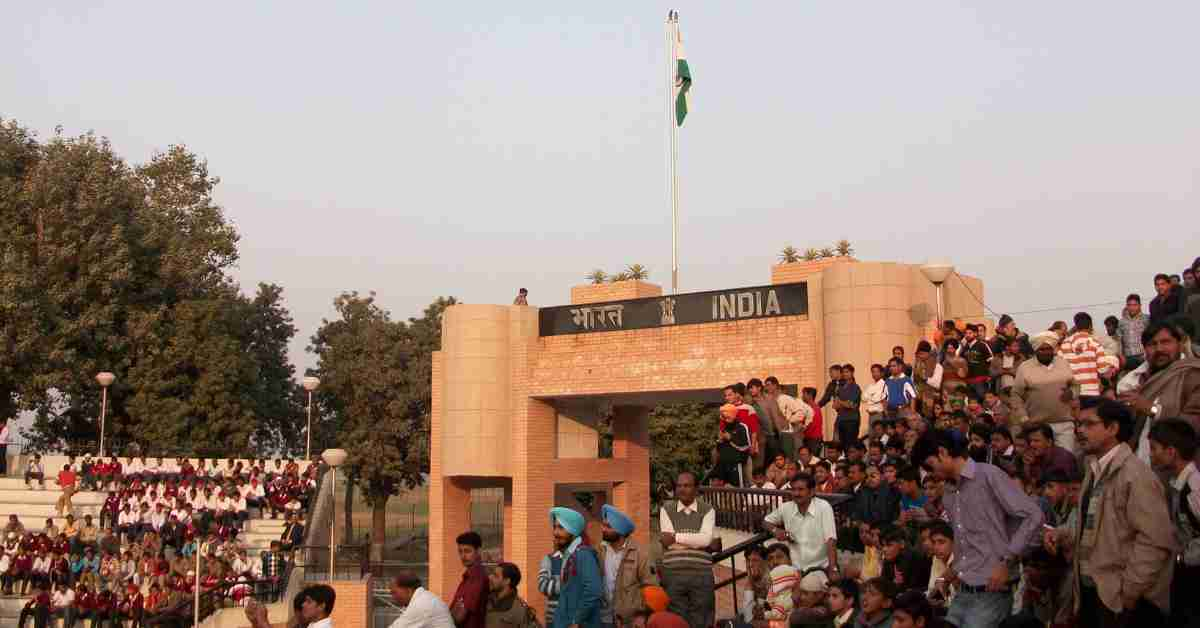
Located in the Punjab region, the Wagah border is a significant landmark in the history of India and Pakistan.
After the Indian subcontinent gained independence from British rule, this border was established in 1947 to demarcate the boundary between the two countries.
Despite political tensions between India and Pakistan, the daily military ceremony at the Wagah border has continued since 1959.
This outpost is also important for access to Pakistan. Punjab is known for its many historical monuments, making it a popular destination for tourists.
The daily show, complete with passionate national anthems and lively crowds, is an experience not to be missed.
#4. Maharaja Ranjit Singh Museum, Amritsar
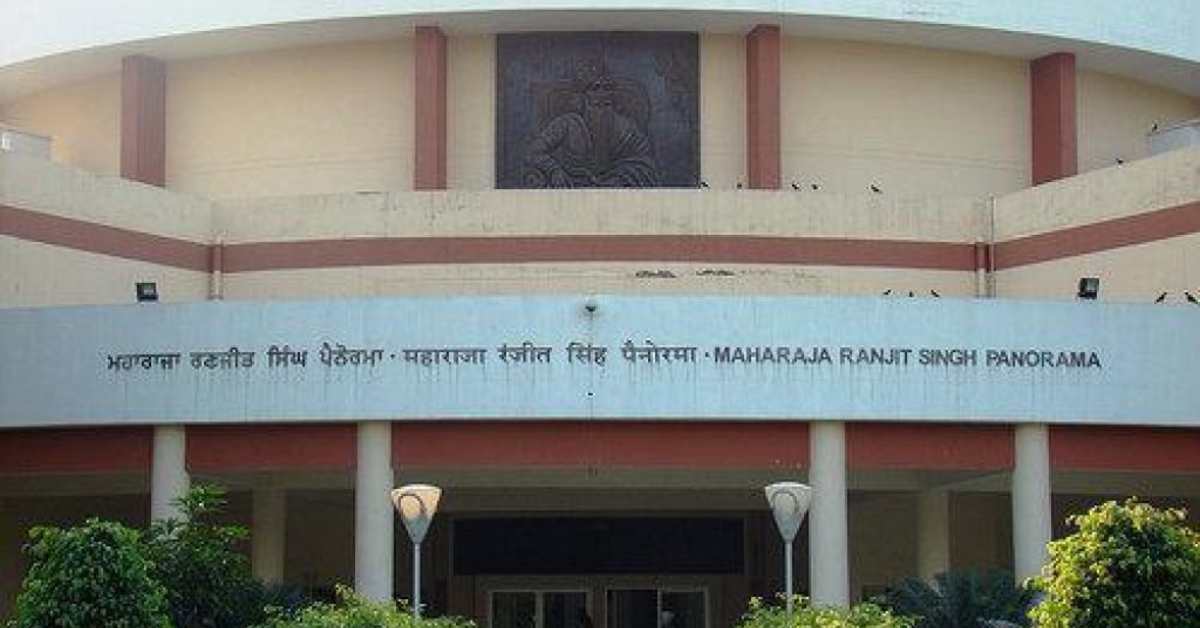
Maharaja Ranjit Singh Museum is undeniably one of the most significant historical monuments of Punjab.
Once serving as the summer palace of the first king of the Sikh Empire, Maharaja Ranjit Singh, it was later transformed into a museum in 1977 CE.
Today, it contains an incredible collection of artifacts, including arms and armor, paintings, centuries-old coins, and manuscripts. The museum’s most famous painting, showcasing the city of Lahore, is not to be missed.
Next to the museum, the beautiful Maharaja Ranjit Singh Panorama captures the life of the Maharaja in an eternal visual record. This museum is truly a must-see for those interested in the historical monuments of Punjab.
#5. Quila Mubarak, Bhatinda
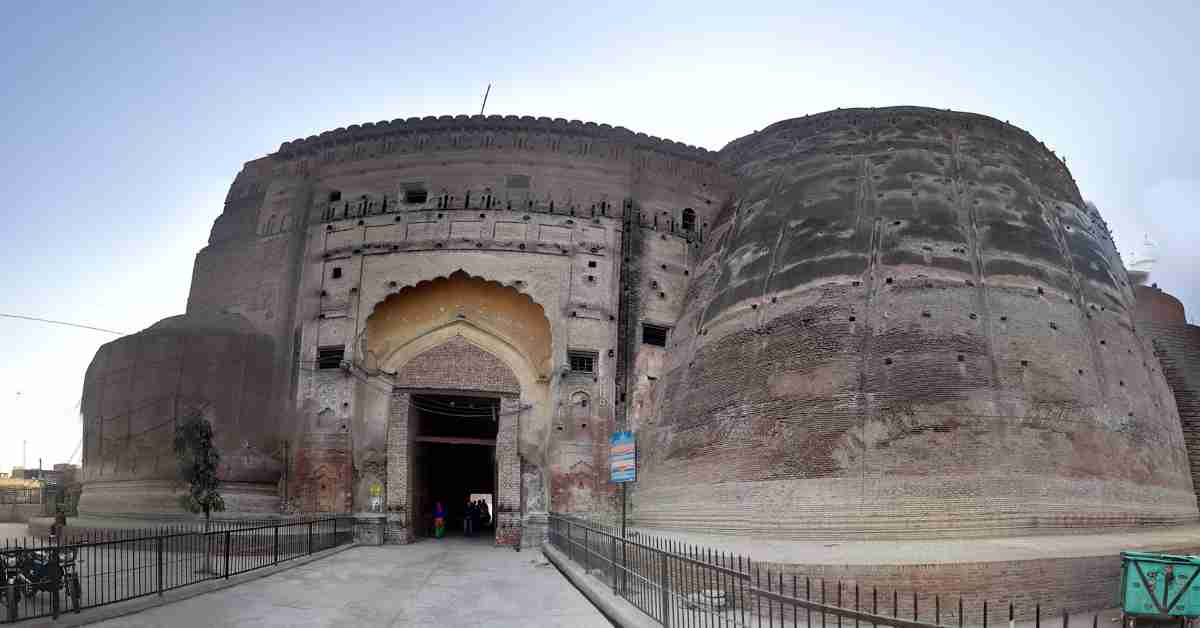
Punjab is home to some of the most fascinating historical monuments of India, and Quila Mubarak in Bhatinda is one such gem.
Built during the Kushana dynasty on King Kanishka’s initiative, the fort takes one back to a glorious era of rulers like Sultan Mahmud and Prithvi Raj Chauhan.
Interestingly, the fort is also associated with Rajia Sultana, the first lady to hold the throne of Delhi, as she was imprisoned here.
The fort has two sections, Quila Androon and Quila Mubarak, with the former being the abode of the royal family. The architectural style is a blend of Rajasthani and Mughal influences.
Quila Mubarak is undoubtedly a must-visit for anyone who wants to experience the awe-inspiring magnificence of Punjab’s historical monuments.
#6. Sheesh Mahal, Patiala
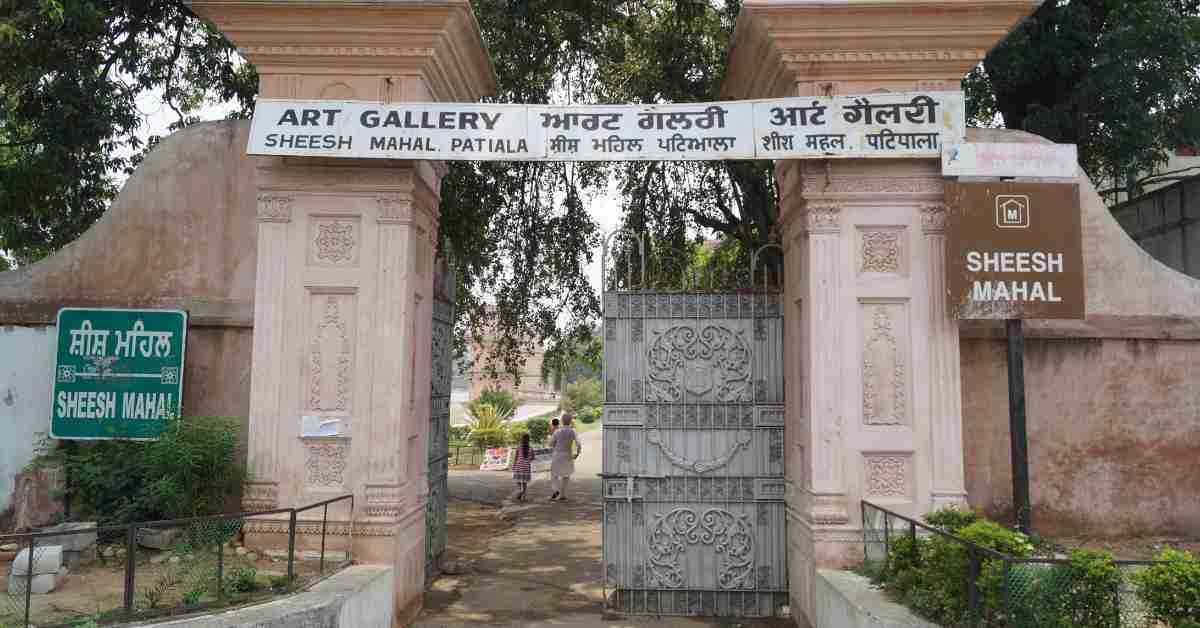
Punjab is a state in India that is rich in history and culture. One of the most magnificent historical monuments of Punjab is the Sheesh Mahal, located in Patiala.
Also known as the ‘Palace of Mirrors’, it was originally built for the Kings of Patiala. Maharaja Narinder Singh is credited with designing this grand palace that can leave anyone in awe.
The Sheesh Mahal was constructed as a pleasure complex and is now home to a museum, an art gallery, the famed medal gallery, and the North Zone Cultural Centre.
The palace is famous for its Kangra and Rajasthani qalam paintings, which depict the poetic visions of Keshav, Surdas, and Bihari. Anyone who visits Patiala is sure to be enthralled by this stunning masterpiece.
#7. Khairuddin Masjid, Amritsar
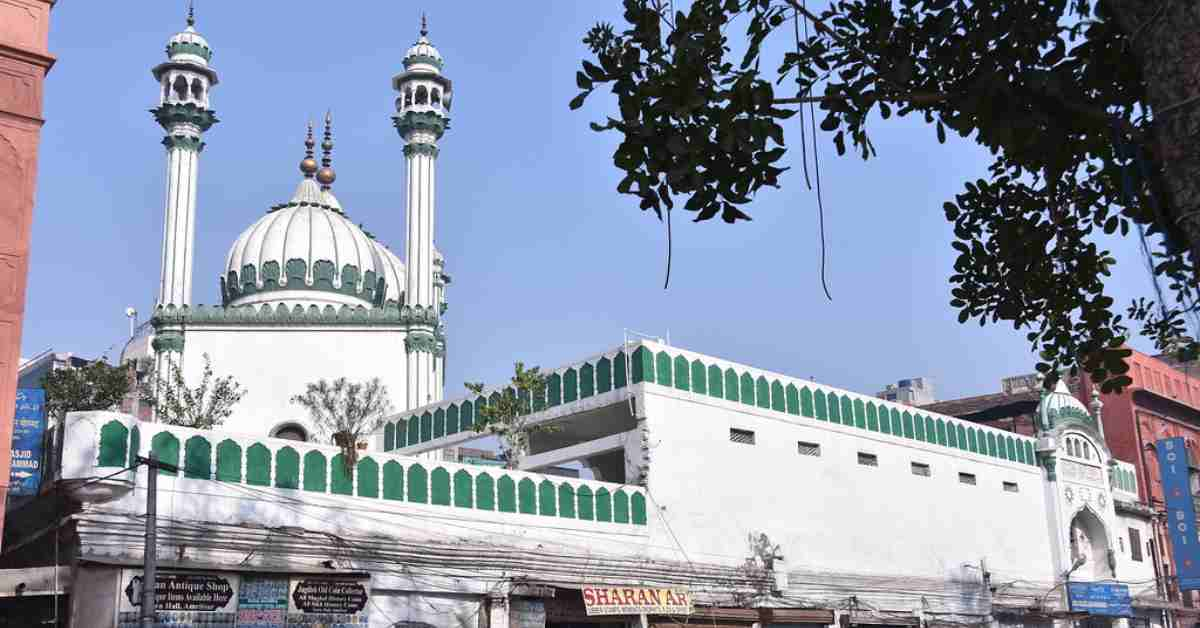
The Khairuddin Masjid, also known as Jama Masjid, is one of the most beautiful historical monuments of Punjab. Built-in 1876 CE by Muhammad Khairuddin, this magnificent mosque played a significant role during India’s struggle for independence.
Syed Ata Ullah Shah Bukhari, a notable Muslim intellectual and political figure, delivered inspiring speeches from the pillars of this mosque, urging the people to fight against British rule.
The mosque witnessed the famous proclamation of Tootie-e-Hind, Shah Attaullah Bukhari, to declare war against the Britishers.
Today, the Khairuddin Mosque remains an essential cultural and historical site and is well-known for its remarkable architecture.
#8. Maharaja Ranjit Singh War Museum, Ludhiana
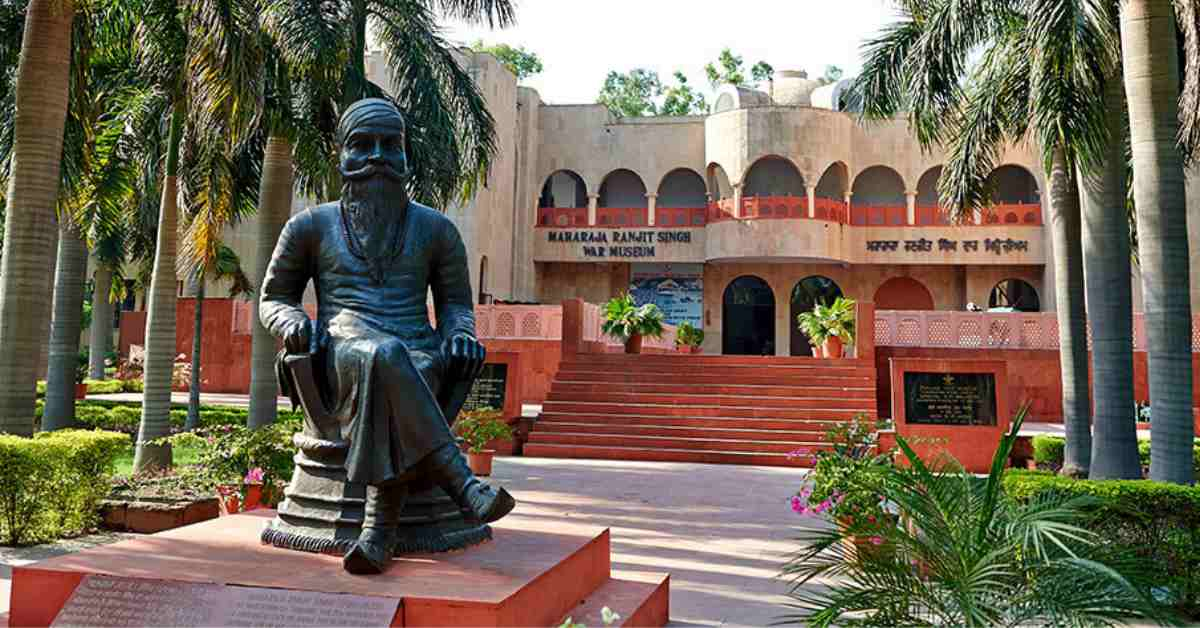
The Maharaja Ranjit Singh War Museum is one of the most important historical monuments of Punjab.
Built-in 1999 and spread over 4 acres of land, this museum pays tribute to the brave soldiers who fought and sacrificed their lives during various wars and battles.
As you enter the museum, the proud figure of Maharaja Ranjit Singh sitting on his throne greets you. The museum has 12 galleries with exhibits ranging from Ancient History to Post Independence History to War Hero’s, Air Force, and Navy galleries.
You can also see pictures of different Chakra winners, Chief Marshals, Generals, and Admirals, along with Navy, Army, and Air Force trophies displayed on two beautiful lawns.
The museum’s light and sound show is a must-see, enabling visitors to learn about the War of Independence and the heroic role played by the soldiers of Punjab.
#9. Lodhi Fort (Purana Qila), Ludhiana
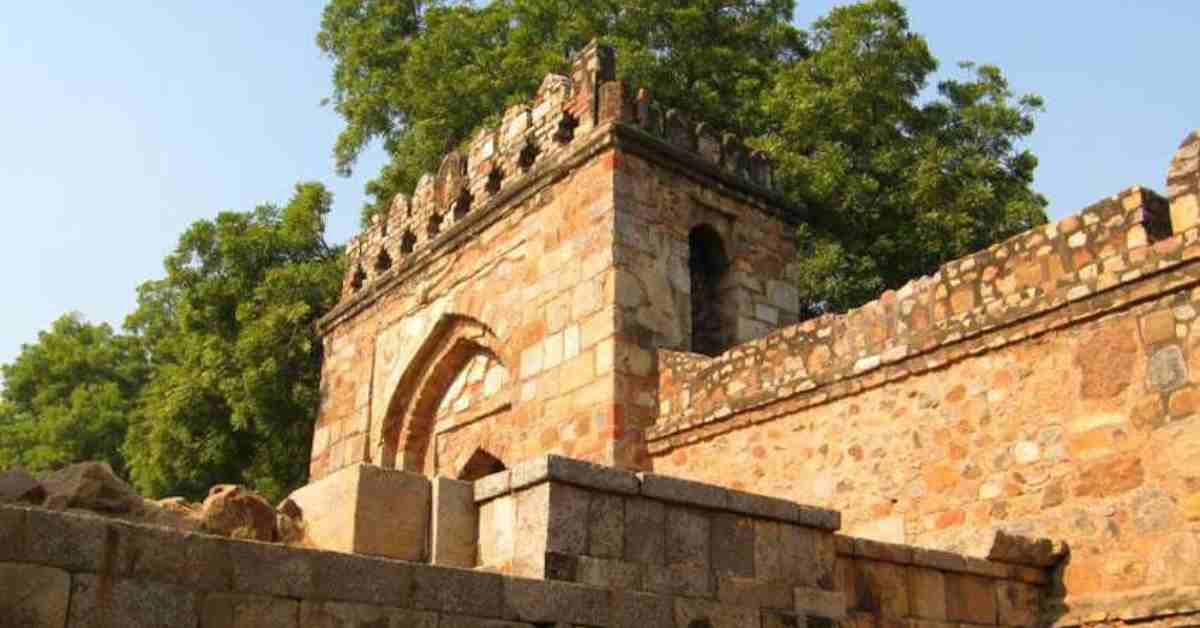
Lodhi Fort, also known as Purana Qila, is one of the most magnificent historical monuments of Punjab.
Built by Sikander Lodhi 500 years ago, this stunning castle still stands tall on the bank of the river Sutlej, despite facing numerous natural calamities.
Its ruins still reflect the beautiful Mughal architecture, which attracts tourists from all over the world.
Surrounded by greenery, exploring this magnificent structure takes around three hours, making it an excellent attraction among places to visit in Ludhiana.
So, if you’re planning a trip to Ludhiana, be sure to add Lodhi Fort to your list of must-visit places.
#10. Baradari Gardens, Patiala

Baradari Gardens in Patiala is a hidden gem that showcases the historical monuments of Punjab.
As you enter the garden, you’ll be struck by the sheer beauty of the rare trees and shrubs that have been planted there.
But that’s not all – the Colonial buildings that dot the garden are equally impressive, as is the marble statue of Maharaja Rajindera Singh.
And if you’re a fan of historical monuments of Punjab, you simply can’t miss the 19th-century Fern House. This replica of the one in Calcutta is truly unique, and a visit to the quaint Rink Hall is also a must.
Spread over a vast area and located just outside Sheranwala Gate in Old Patiala City, this garden is a perfect blend of history, nature, and architecture.
#11. Nurpur Fort, Pathankot

Nupur Fort stands as a magnificent piece of history among the many historical monuments of Punjab. Despite being destroyed by the Britishers and an earthquake, the fort still holds its significance to this day.
The Brij Raj Swami temple within the fort is especially noteworthy, as it is one of the few places where the idols of Lord Krishna and Meera Bai are worshipped together.
With its rich history dating back to the 10th century, Nupur Fort is definitely a must-visit destination for anyone interested in exploring the cultural heritage of Punjab.
#12. Gobindgarh Fort, Amritsar
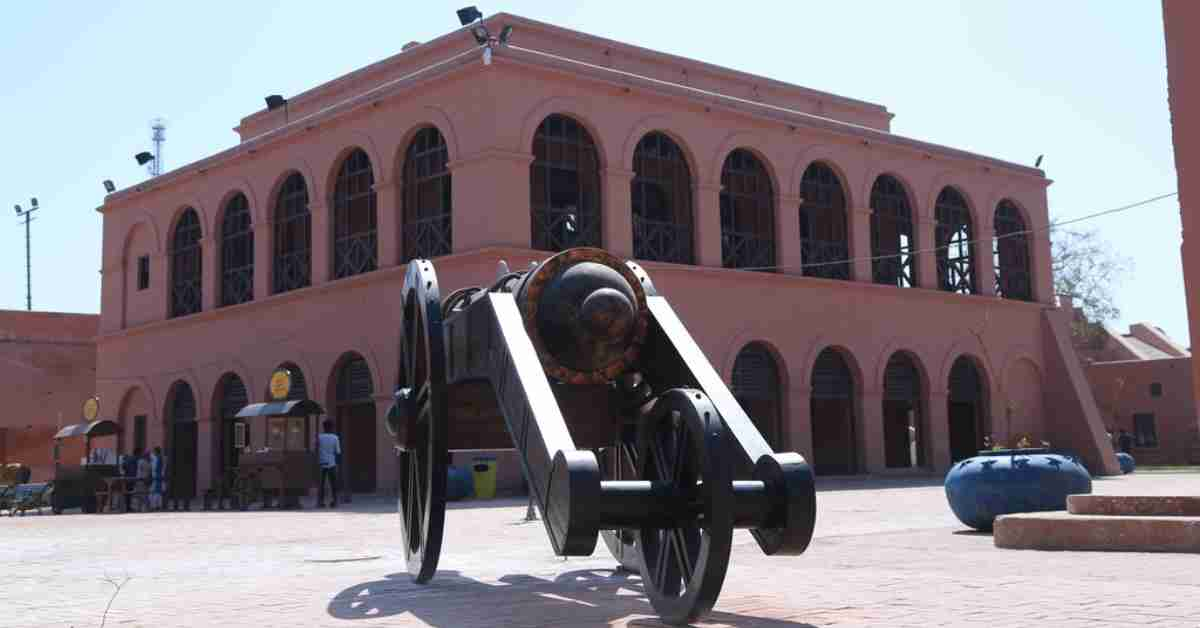
Gobindgarh Fort, located in Amritsar, Punjab, is one of the most iconic historical monuments of Punjab.
Built in the 18th century, this fort was constructed under the guidance of Maharaja Ranjit Singh, the founder of the Sikh Empire. The fort was named after Guru Gobind Singh, the tenth Sikh guru.
Its strategic location, surrounded by a moat, made it a vital stronghold for the protection of the city from external threats.
The fort has a rich history of being used by various empires such as the Mughals, Afghans, and the British.
The Toshakhana or the coin museum houses an impressive collection of coins and rare artefacts.
Make sure to catch the 7-D show ‘Sher-e-Punjab’ which takes you through the life of Maharaja Ranjit Singh.
And for food lovers, the fort has several restaurants and food stalls serving a range of Punjabi cuisine.
#13. Sri Ram Tirath Temple, Amritsar

Sri Ram Tirath Temple in Amritsar is one of the historical monuments of Punjab worth visiting.
This temple is located 12 km west of Amritsar on Chogawan road and dates back to the period of Ramayana.
It has an ancient tank and several temples, including the site where Mata Sita gave birth to Luv & Kush. Rishi Valmiki’s hut and the well where Mata Sita used to take a bath are also still standing.
The Bedis of Punjab and Sodhis, two important clans in Sikh history, are said to trace their descent from Luv and Kush respectively.
On the full moon night in November, a four-day fair is held here that has been going on since times immemorial.
Takeaway
There you have it – 13 of the most historically significant monuments of Punjab, each with a unique story to tell.
The monuments we visited are just the tip of the iceberg, hundreds and thousands more stand scattered across this wonderful land.
It is impossible to list all of the architectural wonders that exist in Punjab; however, we have done our best to showcase some of those we think are most worth visiting or taking note of.
We hope this has been helpful in understanding the many wonders of Punjab. Please feel free to share this post or include one of your own favorite monuments if we missed one in this list – if so please comment below.

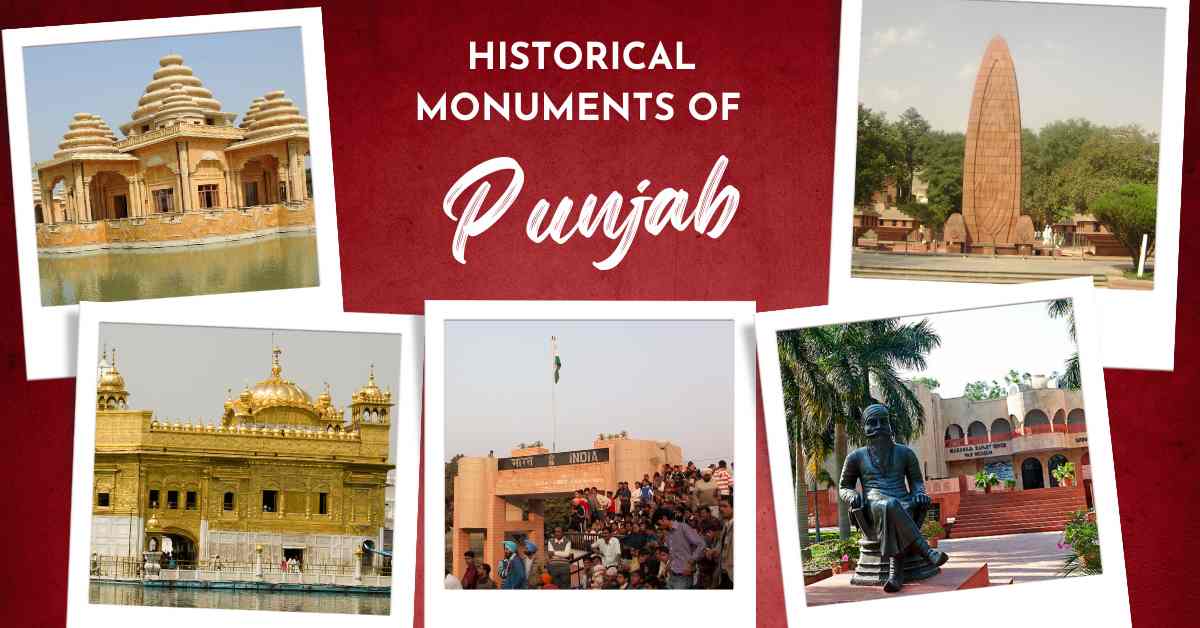
Each historical monument is a timeless masterpiece, echoing the whispers of the past and standing as a testament to human ingenuity and creativity. Thank you for sharing these captivating glimpses into our shared heritage.
we are glad that you really liked it
a very big thankyou for this valuable comment
Thank you so much for your review